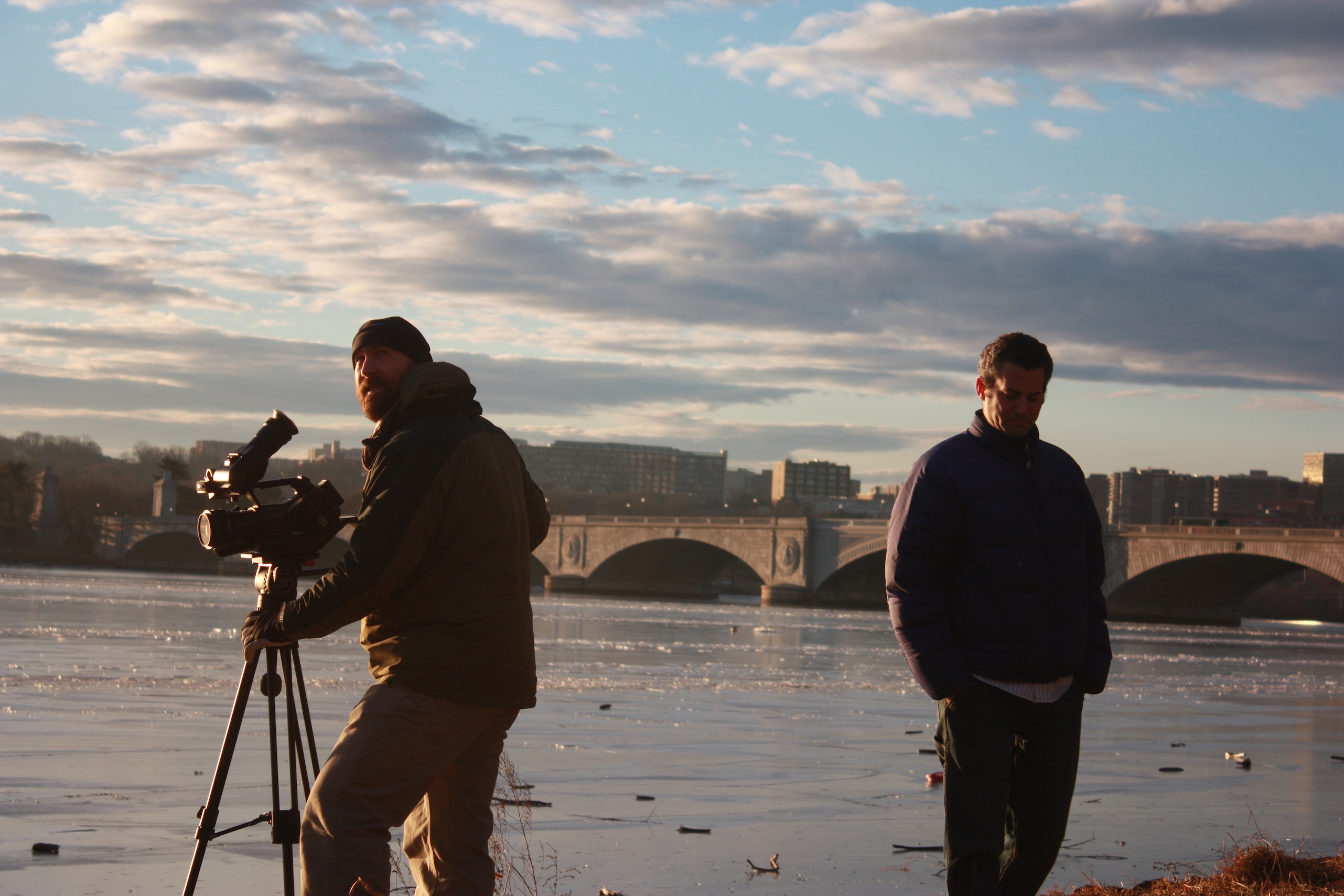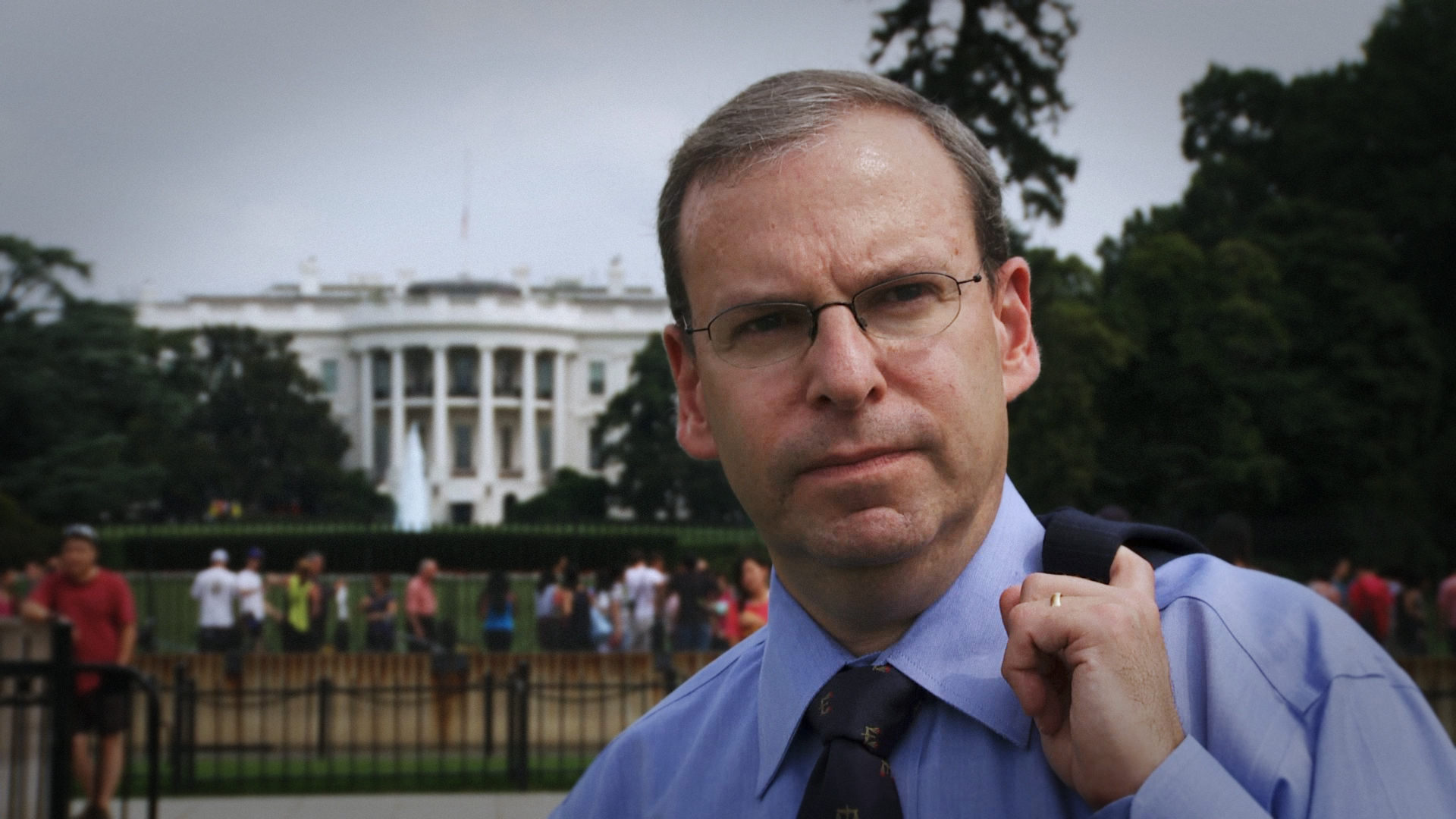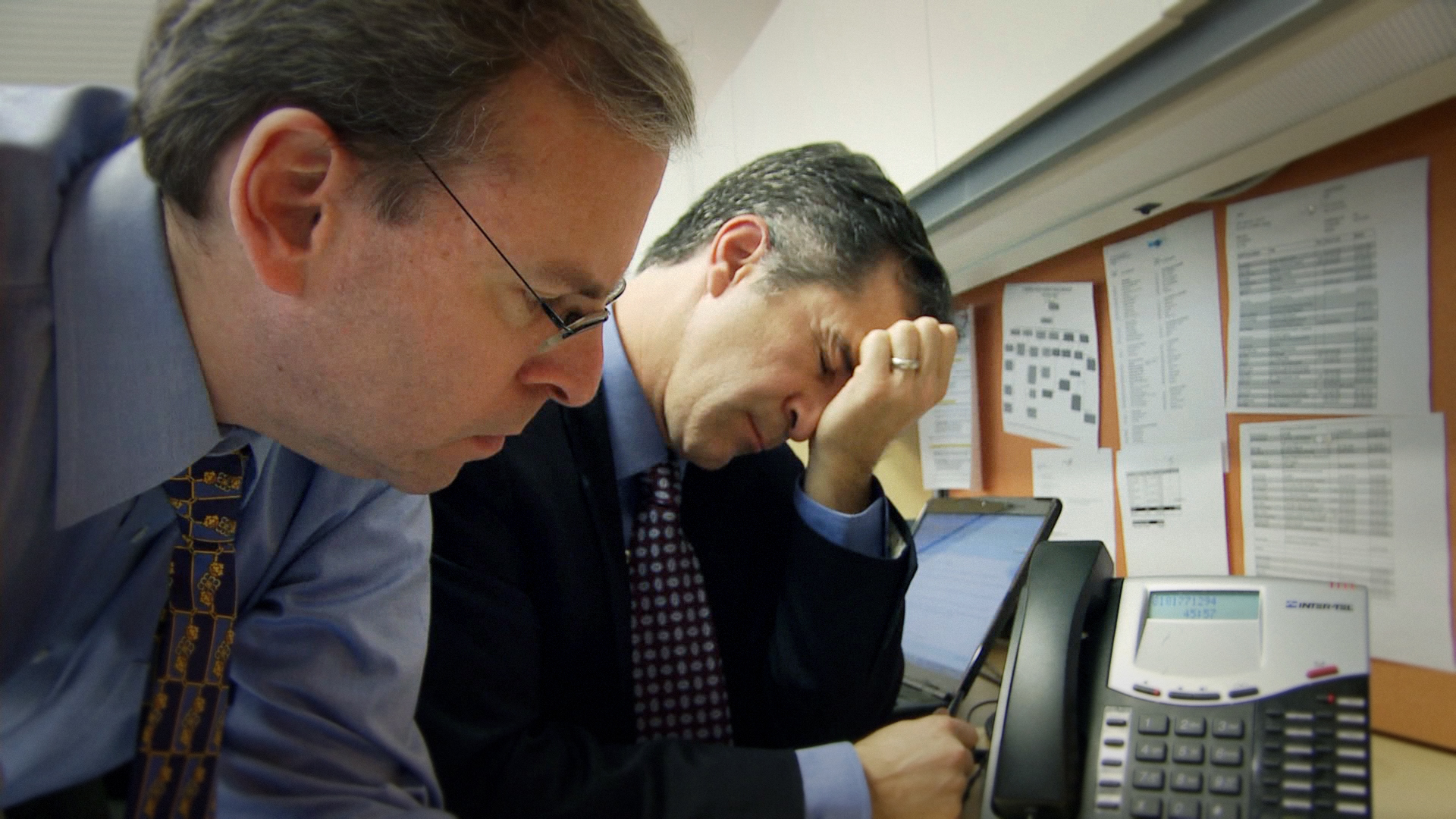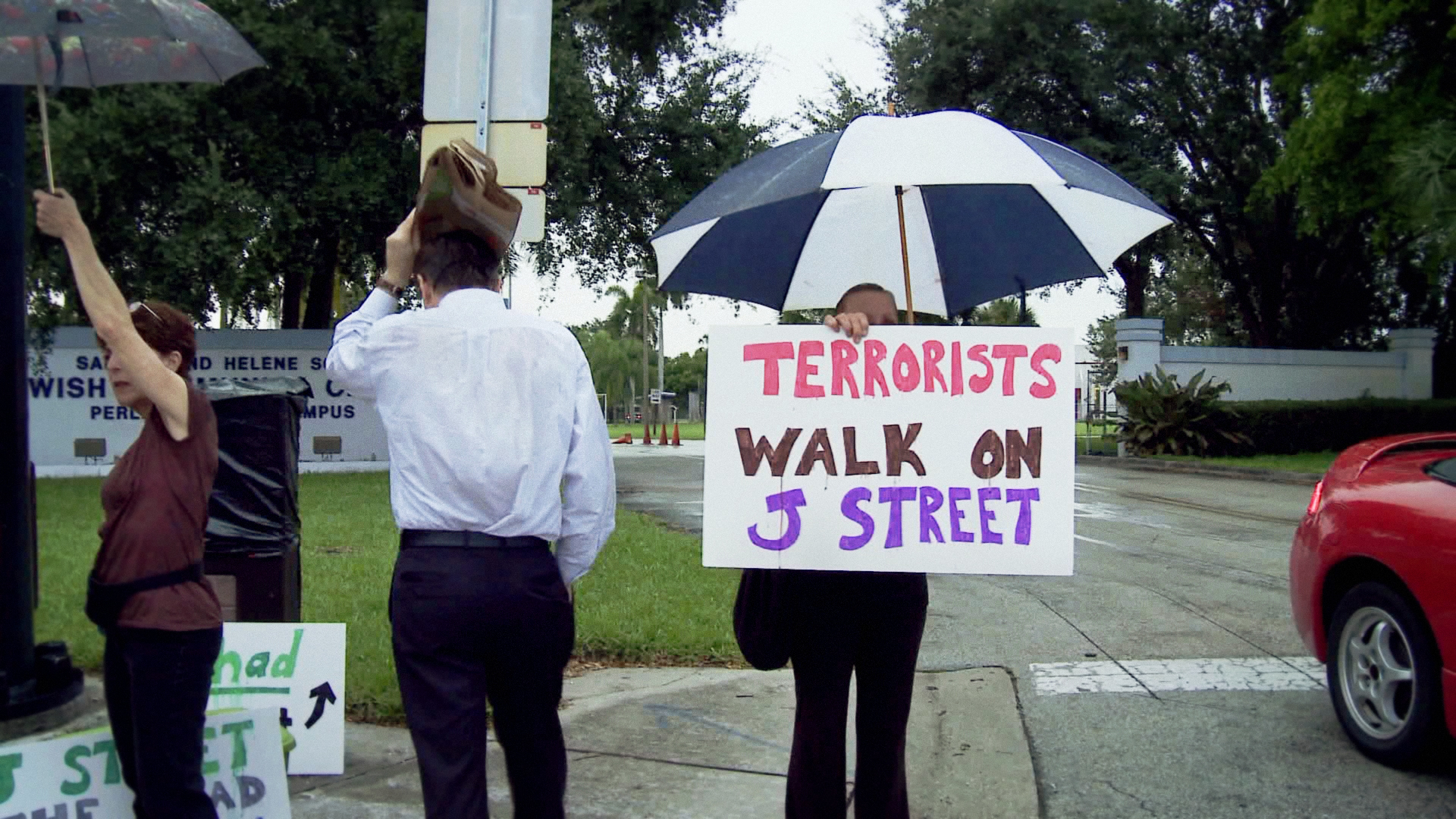
For several years, filmmakers Ken Winikur and Ben Avishai have been following an ambitious team of lobbyists trying to change the nature of the conversation about Israel and Mideast policy in Washington. J STREET (the name of both the lobby group and the film) is a young, progressive, pro-Israel advocacy group challenging the establishment and pushing the Obama administration to take a more active role in negotiating a two-state solution. The film is near completion and, as tensions in the Middle East escalate, the project is ripe to start conversations across the country about what it takes to broaden opportunities for peace, what’s at stake for the Jewish community in the US, and how to penetrate a Washington culture long-committed to one vision of what being pro-Israel means.
LEF Program Director Sara Archambault checked in on this filmmaking team to find out more about their process and approach to this story.
1. How did you come to this subject matter and why did you think it was time to visit J STREET?
In 2009, we heard rumblings about an upstart lobby group called J Street in the community…mostly in The Forward, which is a historically significant newspaper in the American-Jewish community. It used to be a Yiddish newspaper – now it’s a sort of a progressive Jewish weekly. We also knew people who were involved, helping them to formulate policy and think through positions. We felt that their story was an interesting one that had never been told, the story of a progressive political organization in the American-Jewish community that was operating “inside the beltway” to influence American foreign policy to realize a two-state solution. There had always been left leaning Jewish organizations in regards to Israel but never one that was a serious player in Washington. That space had been locked up, mostly by AIPAC, which is almost mythological in its power and often referred to as “The Lobby”. So here was a progressive group led by a seasoned political player who was the son of a right wing Israeli political player…well, there was something interesting there. And, of course, as American Jews, this was an issue of grave concern for us, “why can’t Israelis and Palestinians make peace?” In 2010 after their first national conference, we decided that the time was right to begin following them and to see where their journey would lead.

2. How did you get access to the team? Were you hoping to tell the story of one political season, or did you have a larger arc in mind when you started out?
Our initial connection with J Street was surprisingly straightforward. We were introduced to Jeremy Ben-Ami the founder of J Street and the main character of our film. We had a couple conference calls and a week later we were filming with them in Washington DC. They were still a-buzz from the success of their first national conference, which had just occurred and everyone was surprised at how well attended it was. Our initial concept was to follow one year in the life of J Street and experience their fight from the inside. It would be bookended by their second national conference. We would get to know the key members and what drove them. As shooting progressed and events in the Middle East heated up and cooled off, we found that there was more to explore in how J Street responded to key political moments, like the Palestinian bid for statehood in the UN and how the Administration was responding to J Street. And so, we continued shooting. We began to realize that the real ending was in J Street’s shifting of the conversation about the Israeli-Palestinian conflict in America, which became very clear in Obama’s speech in Jerusalem after he was re-elected for a second term. The speech sounded as if it was written by J Street and Obama’s emphatic call to the youth of Israel to live side by side with Palestinians within the framework of a two-state solution in order to secure the long term future of Israel was a bright spot for many who deal with this conflict. That, coupled with Vice President Joe Biden’s appearance at J Street’s 2013 national conference felt like a clear sign of their impact; their being “hugged” by the Obama Administration. All told we shot over the course of three years.
3. You balance a mix of interview and vérité footage throughout the film. What were you trying to capture in your approach to the storytelling?
Our vérité footage brings viewers into the moment with J Street. Our characters gave us incredible access and you feel that in the film. Sometimes what we witness is very nasty – people holding signs saying that J Street is a terrorist organization and insinuating that they are a cover for groups who seek the downfall of Israel. Basically, all the tried and true methods that have been used to shout down those who have a different opinion. Sometimes we witness the formation of political strategy like when team members at J Street are spinning midterm election results or another pivotal moment when, in a leadership meeting about shifting public opinion amongst politicians, Jeremy asks the question, “do we want to use the words that are right or the words that are effective?” Well that’s a very provocative statement and a very political one. It really calls into question how you balance your end goals with your process and it’s really this scene that led us to our title, “Art of the Possible” which is based on an Otto van Bismarck quote and points to the imperfection (to put it mildly) of the political process.
So this struggle was all part of the J Street story that we see unfold but placing that within an historical context was really important. We needed a framework for an audience to understand the meaning of these events so we began gathering interviews with journalists, politicians and intellectuals to help the viewer. In the edit there was always a push and pull between the two but we feel that the film has a good balance. What emerges is a story that not only sheds light on the issue of a two-state solution but also how one effects change in US politics.

4. How did you balance the shooting and directing duties when you were in the field?
Our duties in the field were very fluid. Many of the scenes we went in with a general idea of what we wanted to capture or who we wanted to key in on. A majority of the time it was just the two of us shooting and running sound so there was an organic flow to the production. Sometimes we were in two crews and so we would split up and each direct that crew. Also, having worked together for close to ten years now we are able to have quick, shorthand conversations or communicate a lot with a look or nod.
5. For general audiences, there is significant context about the history of the region that you chose to provide to orient them to the current debates and to J Street’s role in them. You needed to pare down a great mountain of information to a few key points. How did you make these decisions and how did you choose to share them with your audience?
Paring down the context of the J Street story was indeed one of our biggest challenges. Yet for us, all that context – the history, the debates – distills down to the imperative for a two-state solution. This was our starting place and we knew that if viewers didn’t understand that, they wouldn’t understand what was at stake for our characters. We also wanted to make sure viewers understood two additional important pieces of information. First, what J Street is up against (those in America who would chill progress toward a two-state solution for the purpose of reflexively supporting Israeli governmental polices). Second, how close the two sides have been to a solution (Olmert-Abbas negotiations in 2008). We felt that a historical primer on these topics underscored by animation and map graphics, was essential in helping viewers grasp these important concepts.

6. Given the violence happening in the Middle East right now, how do you see your film contributing to the dialogue around peaceful solutions in the Jewish community?
The latest war between Israel and Hamas saddens and sickens us. At the same time, we see the violence as a symptom of a deeper problem that is present even when the war is not hot. There is no military solution to this conflict. To end the cycle of violence there must be dialogue, compromise and pragmatism – between Israelis and Palestinians but also within those groups. Our film is about expanding that conversation, especially in the American Jewish community, so that those calling for a two-state solution (and an active American role to get there) can make their voices heard to the architects of American foreign policy.
7. There is another film in circulation now called THE J STREET CHALLENGE. It seems as though there is a vicious fight for public opinion over the role of this lobby firm in the Jewish community. How are you positioning your film in contrast with this one? What are your thoughts for distribution and outreach?
The fact that “J Street Challenge” was made illustrates the pushback from the forces of the status quo. It is an attack film, plain and simple. The timing of its release is unfortunate, because many people are looking to our film to be the progressive response to that film, which it is not. Ours is a vérité portrait of J Street, warts and all. We believe in the imperative of a two-state solution, but our film is really about what J Street is doing within that. We explore how they walk the fine line to both stay true to their principles while at the same time build their movement and their political capital to effect what they consider to be real change.

8. Talk about your artistic collaboration. Sharing the role as directors can be helpful but challenging. How did you work through your decision-making? How did you decide to embark on this journey together?
After ten years of working together, we know each other well and enjoy the back and forth – about the film’s most overarching theme to the number of frames we hang on a shot. Decision making was made through conversation and consensus, and we were usually on the same page about things. We knew that we each brought different things to the project, and that we could probably not do it without the other.
9. When will the film go into circulation? Do you have a premiere?
We are currently being distributed by Sideways Film which has sold broadcast rights in Israel and Japan. We are also working on a US premiere for the film.

